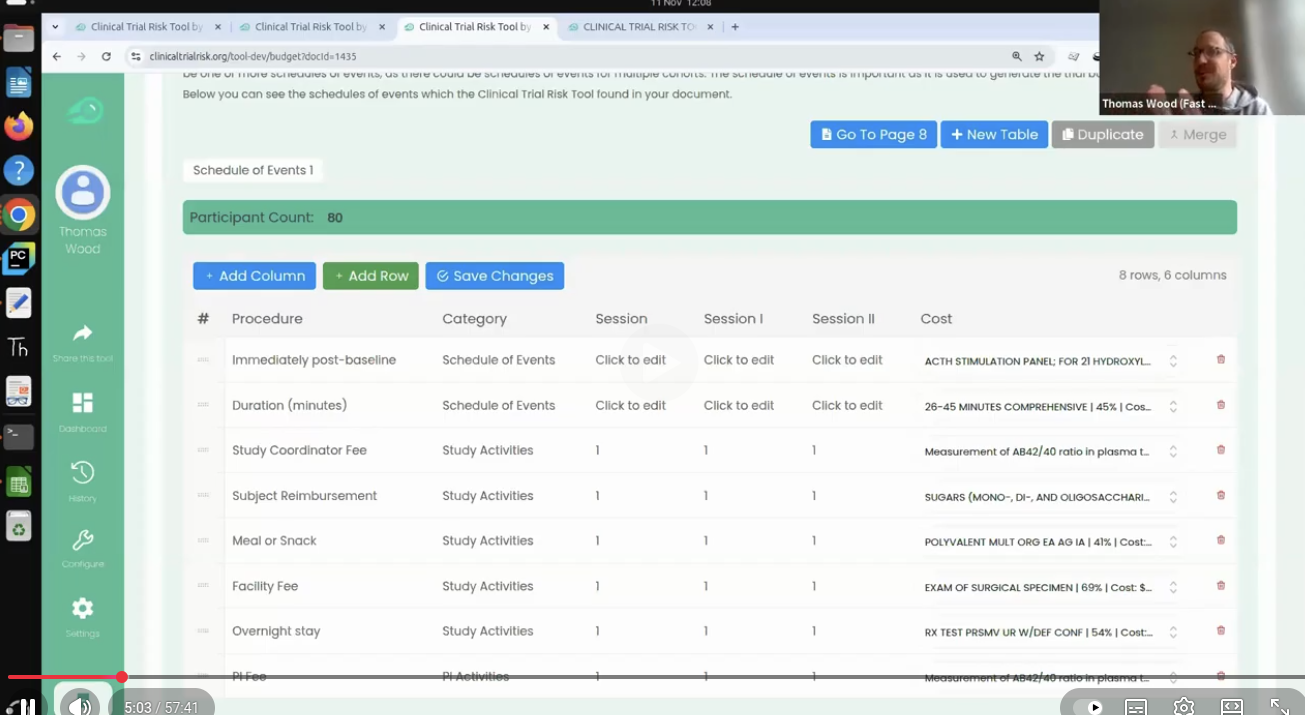
This post originally appeared on Fast Data Science’s blog on LinkedIn.
Clinical trials are essential for medical advancement but are not without risk. Delays, budget overruns, and compliance issues can derail the most carefully planned studies. Proactive risk management is the key to ensuring patient safety, maintaining regulatory compliance, and achieving successful trial outcomes.
In this article we’ll explore the key risks in clinical trials, how AI-powered tools like the Clinical Trial Risk Tool can help mitigate these risks, and practical strategies for ongoing risk monitoring.
Every clinical trial carries a unique set of risks. Here are some of the most critical factors to watch out for:
Inconsistent documentation or protocol deviations can lead to non-compliance.
Changes in regulations across different regions can complicate trials.
Adverse events or side effects can jeopardise participant safety and trial integrity.
Inadequate monitoring can result in delayed responses to safety concerns.
Inefficient processes and inaccurate cost estimates can lead to delays and budget overruns.
Poor site performance and recruitment issues can stall progress.
Incomplete or inconsistent data collection can undermine trial outcomes.
Manual data entry increases the chance of human error.
Identifying these risks early is the first step towards effective risk management.
The Clinical Trial Risk Tool is an AI-powered solution that simplifies and enhances risk management. Here’s how it helps:
It uses natural language processing (NLP) to review protocols and identify potential risks.
Highlights issues such as missing statistical analysis plans or underpowered study designs.
Provides precise cost projections based on trial-specific factors.
Helps avoid unexpected expenses by identifying key cost drivers early.
Offers insights to address risks before they escalate.
Supports decision-making with data-driven analysis and real-time updates.
By leveraging AI and NLP, the Clinical Trial Risk Tool ensures your trial stays on track, compliant, and within budget.
Effective risk management doesn’t stop at the planning stage. Here are some practical strategies for continuous risk monitoring:
Schedule periodic risk assessments throughout the trial lifecycle.
Update risk management plans as new data becomes available.
Track metrics like patient recruitment rates, site performance, and data quality.
Use real-time dashboards to identify and address issues promptly.
Maintain open communication with sponsors, investigators, and site teams.
Ensure all stakeholders are aware of potential risks and mitigation strategies.
Use AI-powered tools like the Clinical Trial Risk Tool for ongoing risk analysis.
Automate data collection and reporting to minimise errors and improve efficiency.
Managing risks effectively is essential for ethical, compliant, and successful clinical trials. The Clinical Trial Risk Tool empowers you with accurate risk assessments, cost estimations, and proactive strategies to stay ahead of potential challenges.
Integrating AI into your risk management process can enhance patient safety, maintain compliance, and ensure your trial achieves its goals.
#ClinicalTrials #RiskManagement #AIDriven

Thomas Wood presents the Clinical Trial Risk Tool at the Clinical AI Interest Group at Alan Turing Institute The Clinical AI Interest group is a community of health professionals from a broad range of backgrounds with an interest in Clinical AI, organised by the Alan Turing Institute. In the group’s November 2025 meeting, the talk was given by Dr Jeff Hogg, Programme Director, MSc AI Implementation (Healthcare), University of Birmingham and Clinical Innovation Officer in AI, University Hospitals Birmingham NHSFT, titled AI Readiness for Health and Care Provider Organisations.

Guest post by Safeer Khan, Lecturer at Department of Pharmaceutical Sciences, Government College University, Lahore, Pakistan Multi-Arm & Multi-Stage (MAMS) Clinical Trials Design Tips The design of clinical trials is increasingly challenged by the Rising Costs, limited availability of eligible patient populations, and the growing demand for timely therapeutic evaluation. Traditional parallel-group designs, which typically compare a single intervention to a control, are often insufficient to meet these pressures in terms of speed, efficiency, and resource utilization.

You can use the t-test when you want to compare the means (averages) of continuous data between two groups, such as blood pressure or maximum concentration of a drug in urine (Cmax). If you have data with a dichotomous outcome, you can use the Chi-Squared test instead - please try our Chi-Squared sample size calculator. The calculator below will calculate the minimum sample size for you. Your expected effect size d is the standardised effect size according to Cohen’s definition.